Monday, March 1, 1943
On the Eastern Front... North of Moscow, a Red Army attack captures the significant town of Demyansk.
In Burma... The Chindit force is making slower than expected progress because. In part, this is the result of a concern for finding clearings for supply drops. It is later discovered that it is possible to recover supplies in jungle areas.
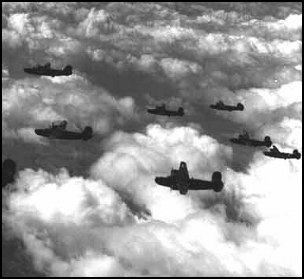
Tuesday, March 2, 1943
In the Bismark Sea... A Japanese convoy of 8 ships, carrying the 7000 troops of the 51st Division (General Nakano), escorted by 8 destroyers, is sighted by Allied forces. Planes from the 5th Air Force (General Kenney) attack the convoy. The Japanese are heading for Lae from Rabaul.
In Tunisia... US forces recover Sbeitla and advance toward Feriana. To their north, the British hold against Axis attacks.
In Burma... The southern Chindit group experiences a setback in meeting its immediate objectives.
Wednesday, March 3, 1943
On the Eastern Front... Soviet forces enter Rzhev after the defending German forces withdraw. The Red Army also captures Lgov on the Seim River, west of Kursk. Meanwhile, Manstein's counteroffensive to the south has eliminated Soviet forces from the west bank of the Donets River, south of Zmiyev. Soviet casualties are estimated at 20,000 dead and 9000 taken prisoner. The lack of prisoners resulting from the encirclement suggests the German forces no longer have the resources necessary to prevent trapped Soviet troops from escaping.
In Tunisia... British forces skirmish with 15th Panzer Division at Medenine during reconnaissance patrols.
In Burma... The southern Chindit group cuts the Mandalay-Myitkyina railroad line, north of Kyaikthin.
In the Bismark Sea... The Japanese convoy carrying the troops of the 51st Division, is heavily attacked by Allied aircraft from the 5th Air Force.
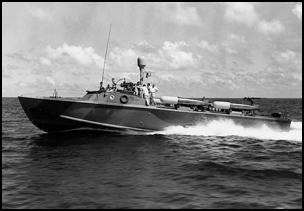
Thursday, March 4, 1943
In the Bismark Sea... The Japanese convoy carrying troops of the 51st Division is again struck by Allied planes from the 5th Air Force. PT-boats join the at attacks. Over the course of the three days, all the Japanese transport, as well as 4 destroyers are sunk and at least 3500 troops are lost. Australian and American air forces have shot down 25 planes for the loss of 5 of their own. This is considered a serious defeat by the Japanese and a setback for their defense of New Guinea.
In Tunisia... Montgomery directs a second infantry division and an armored division to Medenine. A formal defense line has now been established by the British. There are strong antitank defenses, including some of the new 17-pounder guns. Allied intelligence has already warned about a pending Axis attack and this is confirmed by sightings of the 10th and 21st Panzer Divisions moving up.
On the Eastern Front... The Soviets take Olenino and Chertolino to the west of Rzhev. Near Kursk, they capture Sevsk and Sudzha. Meanwhile, Manstein's counteroffensive now aims at Kharkov and the Red Army troops in the area. Part of the SS Panzer Corps strikes westward from Poltava, while units of the 4th Panzer Army attack northward from a line on the Berestovaya River, west of Izyum.
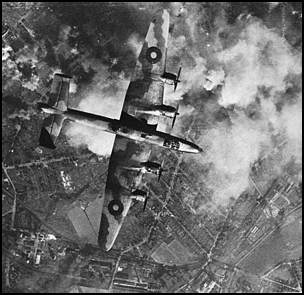
Friday, March 5, 1943
Over Germany... Battle of the Ruhr. In the first of a series of bombing raids against the German Ruhr industrial area, RAF Bomber Command sends 443 aircraft to attack Essen, losing 14 aircraft.
On the Eastern Front... Hoth's 4th Panzer Army inflicts heavy casualties on three Soviet corps west of Izyum but it cannot continue attacking because the Donets River is blocked with floating ice, preventing bridging operations.
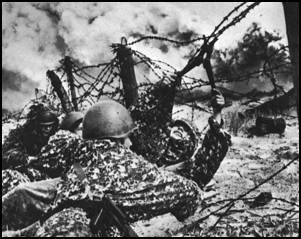
Saturday, March 6, 1943
On the Eastern Front... Red Army troops capture Gzhatsk on the approaches to Vyazma, south of Rzhev.
In Tunisia... A major Axis attack on Medenine, mounted in the morning, is defeated. The attack is renewed in the afternoon and again it is ineffective. British and New Zealand troops note the ineffective performance of their opponents. Fifty Axis tanks have been lost, for no gain. The Axis forces have about 100 tanks left. Meanwhile, Rommel, commanding the Axis forces, favors of withdrawing to Wadi Akarit.
In Washington... Roosevelt appoints a committee to investigate manpower problems in American industry. Among the committee members are Byrnes and Baruch.
In Burma... The Chindits execute a number of demolitions on the railroad between Nankan and Bongyaung.
In the Solomon Islands... Three American cruisers and seven destroyers bombard Japanese airfields at Munda and Vila. Little damage is done. Two Japanese destroyers, however, are sunk in an encounter engagement.
Sunday, March 7, 1943
On the Eastern Front... The 4th Panzer Army has been shifted slightly westward and now attacks northeast from around Krasnograd, linking up with the SS Panzer Corps.
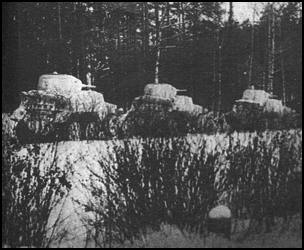
Monday, March 8, 1943
On the Eastern Front... The Soviets take Sychevka between Rzhev and Vyazma, from the forces of German Army Group Center.
In the Atlantic... A change in the standard encoding machine used by the German U-boat fleet creates problems for Allied anti-submarine warfare. A fourth rotor is added to the Engima to ensure secure communications. Allied cryptographers are able to decipher the German communication, after a brief delay.
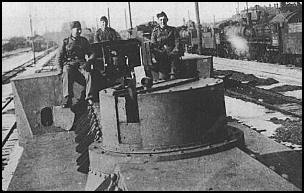
Tuesday, March 9, 1943
On the Eastern Front... Hausser's SS Panzer Corps begin to attack Kharkov from the west and north. To the south of the city, the Soviet 25th Guards Division holds the town of Taranovka against attacks of the German 48th Panzer Corps.
In Tunisia... Rommel leaves Africa for the last time. On his way home he meets Mussolini in Rome and Hitler in East Prussia. Neither is persuaded to withdraw the Axis forces from Africa.
In New Guinea... There are heavy Japanese attacks on Wau.
Wednesday, March 10, 1943
In Tunisia... An Axis attack, with air support, on the Free French outpost at Ksar Rhilane, southeast of Mareth is defeated by Leclerc's troops.
In Burma... The Chindits are now operating in several columns. They cross the Irrawaddy River in two places, at Tagaung and Tigyaing farther north.
From Washington... Chennault is promoted and his command in China is to be enlarged and named the 14th Air Force.
Thursday, March 11, 1943
On the Eastern Front... The SS Panzer Corps enters Kharkov and penetrates to the center of the city after intensive street fighting.
In Washington... The Americans extend the Lend-Lease agreements by one year. The value of the agreements, up to the end of February 1943, is reported to be $9,632,000,000.
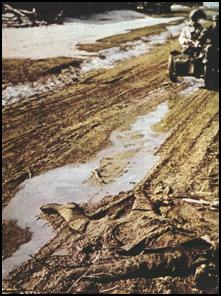
Friday, March 12, 1943
On the Eastern Front... The fighting continues in Kharkov. The German command dispatches a unit eastward to Chuguyev in an effort to cut off Soviet forces to the south of Kharkov. Meanwhile, the Red Army occupies Vyazma as the German Army Group Center continues to retreat on a wide front.
In Tunisia... The 2nd New Zealand Division and the 8th Armored Brigade are secretly moved south from Medenine. They are being concentrated west of Wilder's Gap in preparation for an outflanking move around the Mareth Line, across the Dahar region.
Saturday, March 13, 1943
In Smolensk... A time-bomb is place on board Hitler's personal aircraft by German Army conspirators intending to assassinate the Fuhrer. It fails to explode.
From Berlin... The German Army High Command issues the preliminary orders for Operation Zitadelle (in English meaning Citadel) -- the plan to eliminate the Soviet held salient centered on Kursk.
In China... Chinese forces counterattack Japanese forces in the Yangtze Valley.
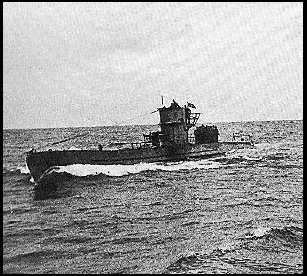
Sunday, March 14, 1943
In the Atlantic... In a series of convoy battles over the next week (March 14-20), 21 ships of 140,800 tons are sunk from convoys SC-122 and HX-229. About 20 of 40 U-boats will make attacks and the convoy escorts will fail to sink a single German U-boat. The German intelligence service, B Dienst, has provided solid information on the routes of these two convoys.
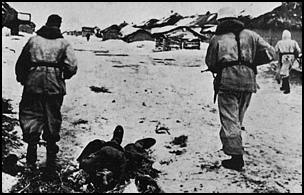
Monday, March 15, 1943
On the Eastern Front... German forces complete the recapture of Kharkov after the last Soviet defenders of the tractor factory withdraws. Meanwhile, to the north, Soviet forces capture Kholm and Zharkovskiy, to the north and east of Velikiye Luki as the German Army Group Center continues its withdrawal.
In New Guinea... The US 7th Fleet (Admiral Carpender) is formed to control naval operations around the island.
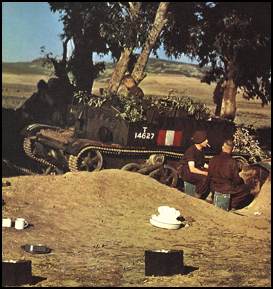
Tuesday, March 16, 1943
In Tunisia... The British 8th Army becomes involved in skirmishes on the approaches to the Mareth Line as it prepares for a full-scale attack on the Axis position.
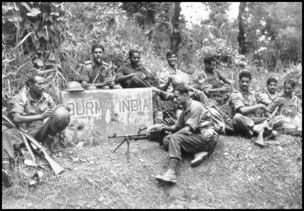
Wednesday, March 17, 1943
In Burma... The British 123rd Indian Brigade is attacked by the Japanese, north of Rathedaung in Arakan, and is compelled to retreat. General Koka commands the Japanese forces involved which include the 55th and 33rd Divisions.
Thursday, March 18, 1943
On the Eastern Front... The German Army's elite "Grossdeutchsland" Division attacks Belgorod in the finale to Manstein's counteroffensive in the Kharkov area. The Soviets suffer 40,000 casualties and lose at least 600 tanks in this final encirclement operation. Manstein's counteroffensive is widely considered an unqualified technical success that restores the German southern front after the debacle at Stalingrad. A large Soviet salient remains to the north, centered on the town of Kursk. However, the operational tempo declines over the next few weeks as the mud of the spring thaw limits mobility on both sides.
In Tunisia... The US 2nd Corps (commanded by General Patton) captures Gafsa and advances toward El Guettar.
In Burma... General Wingate leads the final gropu of Chindits across the Irrawaddy river, south of Inywa. The Japanese have assembled considerable forces to counter the Chindits operations. Meanwhile, in Arakan, Htizwe falls to a British pincer attack and an attack on Donbaik, on the Mayu Peninsula, fails.
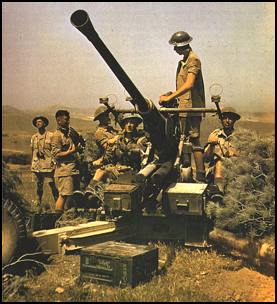
Friday, March 19, 1943
In Tunisia... The New Zealand Corps begins its march toward Ksar Rhilane.
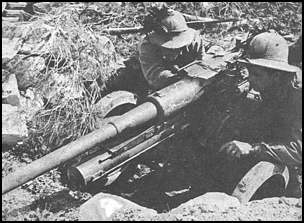
Saturday, March 20, 1943
In Tunisia... The New Zealand Corps abandons efforts at concealment to increase speed. They reach the Tebaga Gap in the evening. During the night the main attack on the Mareth Line begins with a bombardment of Axis positions near the coast (held by the Italian "Young Fascist" Division). The barrage is followed up by troops of the British 50th Division. The Mareth line is held by a mixture of Italian and German units with the remaining 30 tanks of the German 15th Panzer Division in reserve. The 10th Panzer Division guards the American forces at Gafsa and the 21st Panzer Division is in general reserve at Gabes.
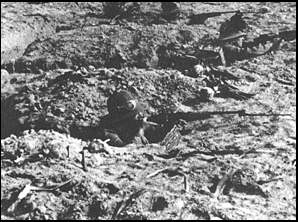
Sunday, March 21, 1943
In Tunisia... Italian forces hold the New Zealand Corps at the Tebaga Gap. The main attack on the Mareth Line, by British forces, in the morning has established a small force across the natural antitank obstacle of Wadi Zigzaou, but ground conditions prevent a further buildup.
Monday, March 22, 1943
In Tunisia... The bridgehead over Wadi Zigzaou has been reinforced in the early hours of the day but a counterattack by the German 15th Panzer Division effectively ends this attack. At the Tebaga Gap, the German 21st Panzer Division and the 164th Light Division prove capable of holding the New Zealand Corps.
On the Eastern Front... The Soviets capture Durovo, northeast of Smolensk.
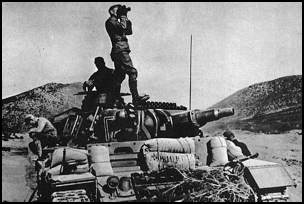
Tuesday, March 23, 1943
In Tunisia... Axis forces manage to hold the American advance near El Guettar. The German 10th Panzer Division suffers heavy losses attempting to exploit early successes. Montgomery decides to alter his main attack to the Tebaga Gap. He sends the 1st Armored Division (commanded by General Horrocks) to join the New Zealander Corps. This move is delayed by traffic control problems.
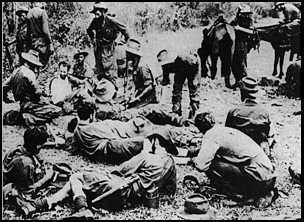
Wednesday, March 24, 1943
In Burma... The various Chindit columns join up between Baw and Pago, but Wingate is ordered to end operation and return to India. The Chindit forces are split up into small groups and most succeed in reaching their base by early April. One returns later via China. About one third of the force has been lost in its operations.
In Tunisia... Montgomery deploys the 4th Indian Division on an outflanking move toward Ksar el Hallouf and then Beni Zelten. Their progress is slowed by difficult terrain and the movement cannot affect the outcome of the battle.
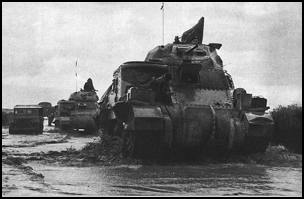
Thursday, March 25, 1943
In Tunisia... The British 1st Armored Division nearly reaches the Tebaga Gap by nightfall. The threat from here, combined with the concentration of Americans at Maknassy, causes General von Arnim to withdraw the German and Italian infantry from the Mareth Line.
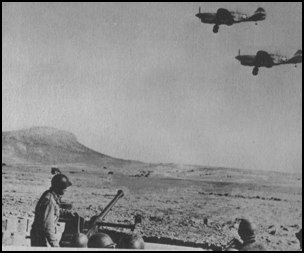
Friday, March 26, 1943
In Tunisia... Axis forces in the Tebaga Gap are attacked by Allied air and ground forces throughout the day. By the evening the Axis defenses have been worn down and the British 1st Armored Division heads for El Hamma under moonlight.
In Vichy France... Laval organizes a cabinet reshuffle to consolidate his power.
In the Bering Sea... An American squadran of 2 cruisers and 4 destroyers (under the command of Admiral McMorris) meets a Japanese squadron of 4 cruisers and 5 destroyers (under the command of Admiral Hosogaya) off the Komandorski Islands. A traditional gun engagement begins and a cruiser on each side is badly damaged. Hosogaya decides to break off at this point although he has a clear superiority which is beginning to tell.
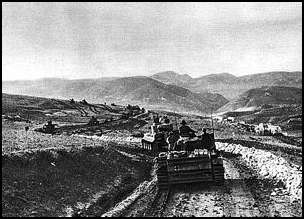
Saturday, March 27, 1943
In Tunisia... A hastily constructed Axis defensive front around El Hamma holds the advancing British until retreating Axis infantry from the Mareth Line escape toward Wadi Akarit. There is a new American attack near Fondouk.
In the Atlantic... The British escort carrier Dasher is lost as a result of an accidental explosion.
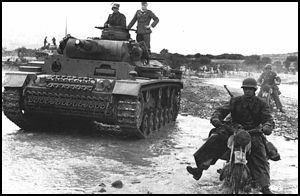
Sunday, March 28, 1943
In Tunisia... Retreating German and Italian forces begin arriving at the Wadi Akarit position from the Mareth Line. The Axis forces have been substantially weakened.
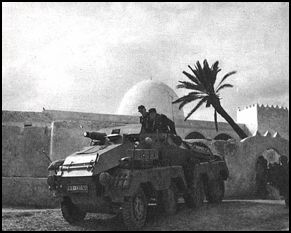
Monday, March 29, 1943
In Tunisia... The last Axis units reach Wadi Akarit as the New Zealand Corps enter Gabes. General Mess, commanding the Italian 1st Army, reports to the Italian High Command that the Akarit position has not received much preparation and may be vulnerable to a rapid attack. This position is, however, considered a naturally defensive barrier.
Tuesday, March 30, 1943
In the North Atlantic... In the Denmark Strait, the crew of the German blockade runner Regensburg set fire to the ship to avoid capture when intercepted by the British light cruiser HMS Glasgow. Only 6 members of the German crew survive.
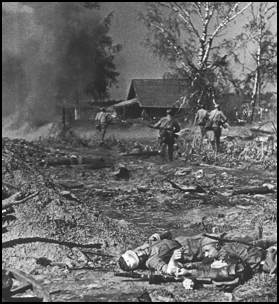
Wednesday, March 31, 1943
On the Eastern Front... The Soviets take Anastasyevsk in the Kuban north of Novorossiysk.
In New Guinea... An American battalion occupies positions around Morobe at the mouth of the Waria River.
Copyright © 2018 Ralph Zuljan
